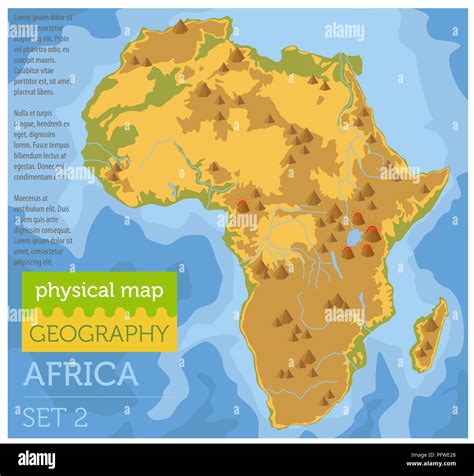Atlas Mountains Africa Map

The Atlas Mountains are a vast mountain range that stretches across the northwestern part of Africa, covering a significant portion of Morocco, Algeria, and Tunisia. The range is approximately 2,500 kilometers (1,553 miles) long and is divided into several sub-ranges, each with its unique geological and cultural characteristics. The Atlas Mountains are not only an important geographical feature but also a region of great cultural and economic significance.
Geological Formation and Features

The Atlas Mountains were formed as a result of the collision between the African and Eurasian tectonic plates, which led to the uplift of the Earth’s crust and the creation of a mountain range. The range is composed of a variety of rocks, including limestone, sandstone, and granite, which have been shaped by millions of years of erosion and weathering. The Atlas Mountains are home to several peaks that exceed 4,000 meters (13,124 feet) in height, with the highest peak being Jbel Toubkal, which stands at 4,167 meters (13,671 feet) above sea level.
Sub-Ranges and Regions
The Atlas Mountains can be divided into several sub-ranges, each with its own unique characteristics and features. The High Atlas range is the highest and most rugged part of the mountains, with steep slopes and deep valleys. The Middle Atlas range is more gentle and is characterized by rolling hills and scenic valleys. The Anti-Atlas range is the southernmost part of the mountains and is known for its arid desert landscape and unique geological features.
| Sub-Range | Location | Height |
|---|---|---|
| High Atlas | Morocco | Up to 4,167 meters (13,671 feet) |
| Middle Atlas | Morocco | Up to 3,000 meters (9,842 feet) |
| Anti-Atlas | Morocco | Up to 2,500 meters (8,202 feet) |

Cultural and Economic Significance

The Atlas Mountains have been home to several indigenous communities for thousands of years, each with their own unique culture and traditions. The Berber people, also known as the Amazigh, are the indigenous people of the region and have a rich cultural heritage that is reflected in their language, music, and art. The Atlas Mountains are also an important economic region, with significant deposits of minerals such as phosphate, iron, and copper. The range is also home to several major rivers, including the Moulouya and the Tensift, which provide water for irrigation and drinking.
Tourism and Conservation
The Atlas Mountains are a popular tourist destination, with several national parks and protected areas that offer opportunities for hiking, trekking, and skiing. The range is also home to several endangered species, including the Barbary macaque and the Atlas deer, which are protected by conservation efforts. The Moroccan government has established several national parks and protected areas to conserve the natural and cultural heritage of the region.
Key Points
- The Atlas Mountains are a vast mountain range that stretches across the northwestern part of Africa.
- The range is approximately 2,500 kilometers (1,553 miles) long and is divided into several sub-ranges.
- The Atlas Mountains are home to several indigenous communities, each with their own unique culture and traditions.
- The range is an important economic region, with significant deposits of minerals and several major rivers.
- The Atlas Mountains are a popular tourist destination, with several national parks and protected areas.
Conclusion
In conclusion, the Atlas Mountains are a unique and fascinating region that offers a wealth of cultural, economic, and geographical significance. From the highest peaks of the High Atlas to the arid desert landscape of the Anti-Atlas, the range is home to a diverse range of landscapes, cultures, and wildlife. As a popular tourist destination and an important economic region, the Atlas Mountains play a significant role in the development of the region and the conservation of its natural and cultural heritage.
What is the highest peak in the Atlas Mountains?
+The highest peak in the Atlas Mountains is Jbel Toubkal, which stands at 4,167 meters (13,671 feet) above sea level.
What is the cultural significance of the Atlas Mountains?
+The Atlas Mountains are home to several indigenous communities, each with their own unique culture and traditions. The Berber people, also known as the Amazigh, are the indigenous people of the region and have a rich cultural heritage that is reflected in their language, music, and art.
What are the main economic activities in the Atlas Mountains?
+The main economic activities in the Atlas Mountains are mining, agriculture, and tourism. The range is home to significant deposits of minerals such as phosphate, iron, and copper, and several major rivers provide water for irrigation and drinking.
Meta description: Discover the Atlas Mountains, a vast mountain range in North Africa, and explore its unique cultural, economic, and geographical significance. Learn about the range’s highest peaks, indigenous communities, and main economic activities. (149 characters)